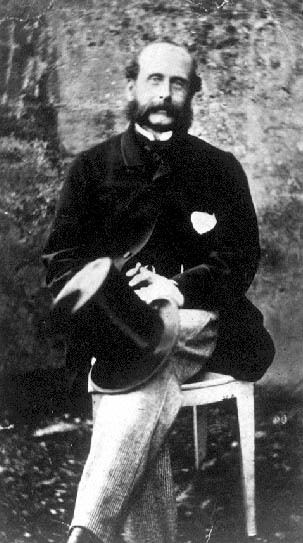Preceded by James Douglas Role Political figure | Name Frederick Seymour | |
 | ||
Born 6 September 1820Belfast, Ireland ( 1820-09-06 ) Died June 10, 1869, Bella Coola, Canada | ||
Frederick Seymour (6 September 1820 – 10 June 1869) was a colonial administrator. He served as the second Governor of the Colony of British Columbia from 1864 to 1866, and the first governor of the union of the two colonies, also named the Colony of British Columbia from 1866 to 1869.
Seymour was the son of Henry Augustus Seymour, who was himself the illegitimate son of Francis Seymour-Conway, 2nd Marquess of Hertford. Upon the latter's death in 1822, Seymour's father was forced to surrender his civil service position and property, and leave Ireland for Belgium. In 1842, Prince Albert helped secure a position for Seymour in the colonial service. For the next twenty years, he served in various positions in a series of colonies mired in political and economic difficulties: Van Diemen's Land, Antigua, Nevis, British Honduras, and the Bay Islands.
In 1864, Seymour attained the apogee of his colonial career as successor to Sir James Douglas as Governor of the Colony of British Columbia. He inherited an administration deeply in debt, and a restless population of British colonists demanding responsible government. Seymour continued his predecessor's initiative of building wagon roads into the gold mining districts of the Cariboo, and quickly responded to the attack by Tsilhqot'in warriors on the rest of a road party they had been persuaded to join, in which a party of road workers at up the Homathko River beyond the head of Bute Inlet. He resisted, however, pressure to amalgamate British Columbia with the Colony of Vancouver Island to consolidate the revenue and debts of the two colonies and reduce administration costs. Eventually he relented, and the colonies were united in 1866. Seymour was named governor of the new united colony.
The next three years were unhappy ones for Seymour as he battled a succession of illnesses and faced an increasingly restless population. After Canadian Confederation in 1867, sentiment turned strongly towards the colony seeking admission as a province of Canada. Seymour was lukewarm to the proposal, but regained much of the goodwill he had lost by successfully improving both the economy and infrastructure of the colony, culminating in the construction of a graving dock at Esquimalt.
His term slated to end in 1869, Seymour made one last journey as governor to the Nass River, on the northwest coast of the colony, to mediate a dispute between First Nations tribes. While returning, he became ill with dysentery and died at Bella Coola.
